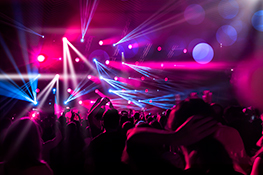2025 Stage Lighting Trends: A Look at the Innovative Technologies Shaping the Industry
The world of stage lighting is constantly evolving, driven by technological advancements and the ever-increasing demands of theatrical productions, concerts, and corporate events. 2025 promises to be a year of significant innovation, with several key trends shaping the industry. This article delves into these exciting developments, highlighting the technologies poised to revolutionize how we illuminate performance spaces.
The Rise of LED and its Continued Refinement
LED lighting has already made a significant impact, but its evolution continues. We can expect to see even more powerful and versatile LED fixtures in 2025, boasting improved color rendering indices (CRI) and enhanced color mixing capabilities. Miniaturization will also play a significant role, allowing for more compact and easily integrated lighting solutions, particularly within complex set designs.
Furthermore, advancements in LED control protocols will simplify programming and allow for more seamless integration with other stage technologies. Expect to see more intelligent fixtures with onboard processing power, enabling sophisticated effects and greater control over individual LEDs within a single luminaire.
The Growing Prevalence of Laser Lighting
Laser technology is another area poised for significant growth in 2025. While lasers have been used in stage lighting for some time, improvements in laser diode technology are leading to more compact, energy-efficient, and cost-effective solutions. This will make laser lighting accessible to a wider range of productions.
Furthermore, advancements in laser projection techniques are opening up exciting new possibilities for creating dynamic and immersive visual experiences. Expect to see more creative applications of lasers for projection mapping, atmospheric effects, and spectacular beam displays.
The Integration of Artificial Intelligence (AI)
Artificial intelligence is beginning to transform many aspects of the entertainment industry, and stage lighting is no exception. AI-powered tools can assist with lighting design, programming, and control. This includes intelligent lighting systems that can adapt automatically to changes in the performance or environment, optimizing the lighting scheme in real-time.
Furthermore, AI can help with predictive maintenance of lighting equipment, reducing downtime and ensuring the smooth operation of productions. Expect to see more integrated AI-powered platforms streamlining workflow and enhancing the overall creative process.
Virtual and Augmented Reality (VR/AR) Integration
The convergence of stage lighting and VR/AR technologies is opening up exciting new avenues for immersive storytelling and creative expression. Imagine virtual sets illuminated with perfectly synchronized lighting, or augmented reality overlays adding dynamic visual effects to live performances. This trend is still in its early stages, but 2025 will see significant development and increased adoption of VR/AR in stage lighting applications.
These advancements will create more interactive and engaging experiences for both performers and audiences, blurring the lines between physical and digital realities.
Sustainable and Energy-Efficient Solutions
Environmental concerns are increasingly influencing the stage lighting industry. The move toward LED technology, already underway, will continue to accelerate, driven by the need for more energy-efficient and sustainable lighting solutions. Further advancements in power management systems and recycling programs will contribute to a greener future for stage lighting.
Expect manufacturers to focus on reducing the carbon footprint of their products and promoting responsible disposal methods to minimize the industry’s overall environmental impact.
Conclusion: A Bright Future for Stage Lighting
2025 promises to be a pivotal year for stage lighting, with technological advancements transforming how we illuminate performances. From the continued refinement of LED technology and the rise of AI-powered systems to the integration of VR/AR and a greater emphasis on sustainability, the future of stage lighting is bright. By embracing these innovations, the industry can continue to push creative boundaries and deliver even more spectacular and immersive experiences for audiences worldwide.


 Auditorium Construction Services
Auditorium Construction Services 